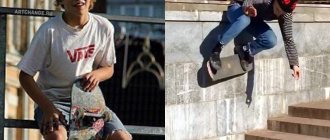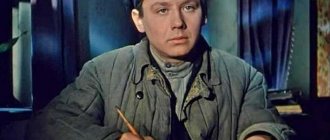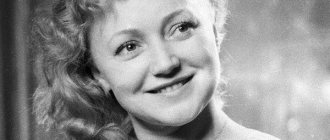"Lady Death"
From a distance of seven decades, wartime events are perceived and interpreted by many in a rather unique way.
In the year of the 70th anniversary of the Victory, one Russian publication, in a selection of photographs of all kinds of maniacs and serial killers, published a group portrait of Soviet female snipers, indicating that during the war years they took the lives of several hundred people in total. Journalists who grew up in the warmth and bliss of peacetime obviously do not see the difference between murderers and those who took up arms to defend their homeland.
Lyudmila Pavlichenko , the most successful female sniper of the Second World War, first encountered such misunderstanding during a visit to the United States, where she was nicknamed “Lady Death.”
But American reporters, greedy for sensation, expecting to see a “killing machine” in female form, discovered that in front of them was an ordinary young woman who had suffered terrible trials that failed to break her will...
Student, Komsomol member, beauty...
Hero of the Great Patriotic War, sniper Lyudmila Pavlichenko.
1942 Photo: RIA Novosti/Yuriy Ivanov She was born on July 12, 1916 in the city of Belaya Tserkov in the Kiev province. Ordinary life was changed by first love, which ended in early marriage and the birth of a son, Rostislav, who was born when Lyuda was only 16 years old.
Although Lyudmila got married, this did not save her from gossip. As a result, the family moved to Kyiv.
As often happens, the early marriage quickly fell apart. Having bore the surname Belova as a girl, Lyudmila after the divorce retained the surname Pavlichenko - it was under this name that, without exaggeration, the whole world recognized her.
The status of a single mother at such a tender age did not frighten Luda - after the ninth grade she began studying at evening school, while simultaneously working as a grinder in Kiev.
Relatives and friends helped raise little Rostislav.
In 1937, Lyudmila Pavlichenko entered the history department of Taras Shevchenko Kyiv State University. Like most students of the anxious pre-war period, Lyuda was preparing, “if there was war tomorrow,” to fight for the Motherland. The girl was involved in shooting sports, showing very good results.
Childhood and youth
Pavlichenko became the most productive not only among Soviet snipers. A girl from a simple working-class family broke the world record for the number of enemies destroyed. Among Belova’s relatives, which is the sniper’s maiden name, there were no military personnel. My father worked as a mechanic. True, he took part in the Civil War.
Video course “Spring”
Landscaping for busy people, a beautiful garden without the hassle
A training course for those who want to make their dacha beautiful and prefer to spend their time, effort and money wisely.
Special offer! 50% discount! Make good use of your self-isolation!
₽ 1200.00 ₽ 600.00
MORE ❯❯❯
Lyudmila Pavlichenko
Pavlichenko’s small homeland is Bila Tserkva. In the early 30s, the family moved to Kyiv. Lyudmila dreamed of becoming a history teacher. After school I entered the university, but while still a high school student, I worked at a factory. Lyudmila went to work at the insistence of her father, who believed that her work biography would compensate for the shortcomings of her origin: Pavlichenko’s mother had noble roots.
Lyudmila made a career at the plant. At first she did menial work, then she learned to be a turner, and then became a draftsman. Among young people in those years, it was fashionable to acquire military specialties. Aviation sports were especially popular. Pavlichenko was afraid of heights from an early age, and therefore decided to try her hand at shooting.
Lyudmila Pavlichenko in her youth
At the very first lesson, yesterday's schoolgirl hit the target. The first success inspired me. Lyudmila began training in a shooting club and successfully fulfilled the standards. Pavlichenko did not give up her sniper activities even while studying at the Faculty of History. Later, Lyudmila was invited to a sniper school. Here she was among the best.
Pavlichenko was in Odessa when the war began. In the seaside city, which soon found itself in the hands of German and Romanian military forces, Lyudmila did an internship, and in her free time she visited the local scientific library: she wrote her thesis on the Pereyaslav Rada.
Lyudmila Pavlichenko with a rifle
Having heard an announcement on the radio about the beginning of war, a student at Kyiv University went to the military registration and enlistment office. There, just by looking at the girl, they said that doctors would be called in later. Nobody wanted to hear the explanation that she was not a doctor at all, but a sniper. But five days later an order was issued to recruit graduates of sniper circles. Pavlichenko took the oath on June 28.
Front instead of diploma
In the summer of 1941, fourth-year student Lyudmila Pavlichenko underwent pre-graduation internship at a scientific library in Odessa. The topic of the future diploma has already been chosen - the reunification of Ukraine with Russia.
When the war began, Lyuda immediately went to the military registration and enlistment office, presented documents about her rifle training, and asked to be sent to the front.
And again the template of the modern perception of life cracks: “How could she, a mother, leave her son and go to war?”
The perception of the surrounding reality among the Soviet people, who stood in the way of Hitler's hordes in June 1941, was different - in order to save their children, they needed to save the Motherland. And in order to save the Motherland, you need to kill the Nazis, and it is impossible to shift this burden onto someone else’s shoulders.
The front rolled east with terrifying speed, and the fighter of the 25th Chapaev Rifle Division, Lyudmila Pavlichenko, very soon had to fight the Nazis and their Romanian allies on the outskirts of Odessa, where she had recently been engaged in scientific work.
Hero of the Soviet Union, sniper Lyudmila Pavlichenko and English actor Laurence Olivier in the film “Chernomortsy.” 1942
She instilled fear in her enemies
In one of her first battles, she replaced the deceased platoon commander; she was shell-shocked by a shell that exploded nearby, but she did not leave the battlefield and refused to go to the hospital at all.
Pre-war shooting skills came in handy during the war - Lyudmila became a sniper. She had excellent hearing, amazing vision and well-developed intuition - all these qualities are priceless for a sniper.
The Nazis' attack on Odessa was so rapid that they did not have time to sufficiently prepare the city's defense from land. They fought with everything they could - they welded sheets of iron onto tractors, turning them into a kind of tanks, and used bottles with a flammable mixture instead of grenades. The lack of weapons reached the point that detachments of workers, recapturing positions from the Germans and Romanians, went to the enemy with sapper blades, exterminating the invaders in bloody hand-to-hand combat.
In this desperate situation, sniper Lyudmila Pavlichenko became an inspiring example for those who were losing hope and losing heart. She replenished her account of killed enemies almost daily.
At first she set herself the task of killing 100 fascists. Having completed this plan, I moved on.
From August to October 1941, on the approaches to Odessa, she destroyed 187 enemy soldiers and officers.
The Soviet press wrote about her exploits, and on the other side of the front they were truly afraid of her. There were rumors that she heard rustling sounds at a distance of half a kilometer, was able to sneak up to the very German trenches, shoot a dozen people at a time, and disappear unnoticed.
Fear, of course, has big eyes, but the fact remains: the enemy failed to destroy the elusive Pavlichenko in Odessa.
Hero of the Soviet Union, sniper Lyudmila Pavlichenko (third from right) among workers at a small arms factory in Liverpool. 1942 Photo: RIA Novosti
Shooting ability
Skeptical historians also question how accurately Lyudmila actually hit the target. This doubt is partly based on the statement of Pavlichenko herself, who wrote in her memoirs that she was often mistaken, mistaking for a German a helmet on a stick displayed by him (such a trick was performed in order to confuse the sniper and calculate his location), and about that she came under fascist fire, from which she could escape only with the help of machine gunners.
In addition, historians cite the following fact: when Pavlichenko was abroad as part of a delegation from our country, she, as a famous sniper, was repeatedly asked to demonstrate her brilliant abilities. Pavlichenko always refused, while another sniper who was part of the delegation, Vladimir Pchelintsev, willingly agreed to the requests. Researchers believe that Lyudmila was simply afraid to miss and thereby not confirm the legend of her accuracy.
Again, the fact that Lyudmila had no place to learn to shoot so phenomenally also raises doubts. What experience did she have? In her own words (she mentioned this in her memoirs), she acquired shooting skills in the OSOAVIAKHIM circle, which, according to researchers, is insufficient for such weapon mastery as they are trying to convince us of.
From athletes to Hollywood stars: men Naomi Campbell
Paralympian Talay without arms and legs: “the harder the fight, the greater the victory”
Sometimes we wear a bra incorrectly: ways that are harmful to health
A moment of happiness on the edge of eternity
The Odessa residents could continue to defend themselves, but an order came to evacuate the Primorsky Army to Sevastopol. Danger loomed over the main base of the Black Sea Fleet, and the forces defending Odessa were recalled there.
In Sevastopol, something happened that would never have happened to a cold-blooded “killing machine” - Lyudmila fell in love. Junior Lieutenant Leonid Kutsenko was her partner in the sniper war, in duels with Nazi snipers. In December 1941, Lyuda was wounded, and Leonid pulled her out from under fire.
War is not the best place for love. But times don't choose. Lyuda Pavlichenko was 25 years old, and the thirst for life desperately argued with death triumphant around her. At the height of the fighting, they applied for marriage registration.
Their happiness will be short-lived. During the next sniper foray, the Germans will discover their position and cover it with mortar fire. Leonid's hand was torn off, and now Lyuda pulled him out from under the fire. But the wounds turned out to be too severe - a few days later he died in the hospital in her arms.
This happened in March 1942. By that time, Lyudmila Pavlichenko’s personal account listed 259 killed fascists.
Hero of the Soviet Union, sniper Lyudmila Pavlichenko lays a wreath at the Tomb of the Unknown Soldier in Cambridge. 1942 Photo: RIA Novosti
Personal life
Ten years before the start of the war, 15-year-old Lyudmila met Alexei Pavlichenko. The young man was older than her. The romantic relationship has gone too far. Soon Lyudmila found out that she was expecting a child. Rumors about the pregnancy of a 15-year-old schoolgirl quickly spread throughout the area. Later, Pavlichenko did not like to talk about this fact from her biography.
Lyudmila Pavlichenko and her second husband Alexey Kitsenko
Pavlichenko’s father was by that time working in the NKVD. Fearing troubles in the service, he insisted on registering the marriage. In 1932, a son, Rostislav, was born. However, family life did not work out, and soon the girl returned to the bosom of the family. Pavlichenko did not like to remember her first husband.
Lyudmila Pavlichenko after the war
In 1941, Lyudmila met Lieutenant Kitsenko. She was going to marry him. But Kitsenko died at the beginning of 1942. Lyudmila received severe injuries and severe nervous shock.
Elderly Lyudmila Pavlichenko with her son, daughter-in-law and granddaughter
Soon after the vacation I received a second concussion. Numerous injuries and mental shock are facts cited by supporters of the version of the exaggerated achievements of the female sniper.
Little details are known about Pavlichenko’s personal life after the war. Lyudmila Mikhailovna married Konstantin Shevelev, but she had no more children.
Sniper duel
After Leonid’s death, her hands began to tremble, which is unacceptable for a sniper. But no one dared to demand composure from her.
Lyuda pulled herself together, and at a gathering of the best snipers, she announced that she took upon herself to bring the number of killed fascists to 300.
To take revenge on the Nazis for Lenya, for her dead comrades, for her warped youth - that was her goal in those terrible months of the spring of 1942.
The Nazis were really hunting for her. Selected Wehrmacht snipers were thrown against Pavlichenko. In one of these duels, which lasted a whole day, Lyuda saw through the sight the eyes of her opponent, realizing that he saw her too. But the Soviet sniper’s shot sounded earlier.
When Lyuda approached his position, she found a notebook from the defeated enemy, where he recorded his victories. By the time he lost to a Russian woman, the Nazi, who started the war in France, had more than 400 killed soldiers and officers.
According to some reports, 36 Nazi snipers entered into a duel with Pavlichenko at different times. They all lost.
Hero of the Soviet Union, former sniper Lyudmila Pavlichenko signs autographs for participants in the Red Pathfinders rally. Photo: RIA Novosti/Khlansky
Evacuation
Shortly before the fall of Sevastopol, in June 1942, Lyudmila Pavlichenko was seriously wounded. She was evacuated by sea. Thanks to this, she avoided the tragic fate of several tens of thousands of defenders of the city, who, deprived of the opportunity to evacuate, died or were captured after the capture of Sevastopol by the Nazis.
The legendary 25th Chapaev Division, in which Lyudmila Pavlichenko fought, died. Its last fighters sank the banners in the Black Sea so that they would not fall to the enemy.
By the time of the evacuation from Sevastopol, Lyudmila Pavlichenko had killed 309 enemy soldiers and officers. She achieved this stunning result in just a year of war.
Moscow decided that she had served her Motherland enough on the front line, and there was no point in throwing a repeatedly wounded, shell-shocked woman who had suffered personal losses into the heat again. Now she had a completely different mission ahead of her.
Hero of the Soviet Union sniper Lyudmila Pavlichenko. 1967 Photo: RIA Novosti
Memory
Until the end of her life, Lyudmila Pavlyuchenko was the symbol of heroism, perseverance and courage of the Russian woman. The children from the pioneer organization, with whom she often communicated, loved to listen to her stories about the war. They gave her a slingshot, which was kept in the small museum of L. Pavlyuchenko for many years. In addition to this memorable gift, awards and souvenirs given to Lyudmila on numerous business trips were kept there.
The grave of Lyudmila Mikhailovna Pavlyuchenko, who passed away on October 27, 1974, is located in Moscow.
"Come closer..."
At the invitation of the wife of the American President Eleanor Roosevelt and the American Student Association, a delegation of Soviet front-line students went to the United States. Lyudmila Pavlichenko was also included in the delegation.
For well-fed America, the Second World War, even despite Pearl Harbor, remained a distant event. They knew about the real horrors of war only by hearsay. But the news that a Russian woman who personally killed more than 300 fascists was coming to the United States caused a sensation.
It’s unlikely that American journalists understood exactly what a Russian heroine should look like, but they certainly didn’t expect to see a pretty young woman whose photo could easily grace the covers of fashion magazines.
Apparently, this is why the thoughts of the reporters at the first press conference with Pavlichenko’s participation went somewhere very far from the war.
— What color underwear do you prefer? – blurted out one of the Americans.
Lyudmila, smiling sweetly, answered:
“In our country you can get a slap in the face for asking such a question.” Come on, come closer...
This answer captivated even the most “toothed sharks” of the American media. Admiring articles about the Russian sniper appeared in almost all American newspapers.
“Don’t you think you’ve been hiding behind my back for too long?”
She was received personally by US President Franklin Roosevelt , and Lyudmila became friends with his wife, Eleanor Roosevelt, and this friendship lasted for many years.
Lyudmila Pavlichenko attended many receptions and participated in rallies in different cities of America. The main theme of her speeches remained the “second front”. The Soviet soldiers fighting the fascists looked with hope at the allies, expecting that they would begin military operations against the Nazis in Europe, but the opening of the “second front” was postponed and postponed.
At a rally in Chicago, Luda Pavlichenko uttered the words thanks to which she will be remembered in the United States for decades to come:
- Gentlemen, I am twenty-five years old. At the front, I had already managed to destroy three hundred and nine fascist invaders. Don't you think, gentlemen, that you've been hiding behind my back for too long?!..
The crowd froze for a moment, and then burst into a storm of applause. That day, a young Russian girl forced many to change their attitude towards the war that was raging in Europe. The famous American country singer Woody Guthrie dedicated a song to her called “Miss Pavlichenko”:
In the heat of summer, in the cold snowy winter In any weather, you hunt down the enemy The world will love your sweet face, just like me. After all, more than three hundred Nazi dogs died from your weapon...
After the USA, Lyudmila Pavlichenko visited Canada, Great Britain, and then returned to the USSR, where she served as an instructor at the Vystrel sniper school.
War
Lyudmila carefully kept the badge she received after graduating from shooting school. When the war began, I decided that I would become a sniper and would certainly apply the acquired skills in real combat. However, at the front she found herself without a rifle.
Lyudmila Pavlichenko in military uniform
Weapons were not issued to recruits. He simply wasn't there. One day, a soldier was killed in front of 25-year-old Pavlichenko. The deceased's rifle became the first military weapon. According to Pavlichenko’s biographers, she shot accurately, and already in the first battles she demonstrated amazing results. Soon she was given a sniper rifle.
Each rifle company had two snipers. Pavlichenko went on a mission with Leonid Kitsenko. At the beginning of August, German-Romanian troops were already approaching Odessa. In the first days of the defense of the city, Pavlichenko accomplished a feat that for some reason was not noted by the Soviet command. On the mission, she destroyed 16 fascists in 15 minutes. The second time Lyudmila made ten successful shots. Among the dead were two German officers.
Sniper Lyudmila Pavlichenko
How did a young woman manage to make so many cold-blooded shots? This is the most common question that foreign journalists asked Pavlichenko. The woman, who accounted for 309 deaths, once told a story that was later replicated by the Soviet media. A soldier for whom she had developed sympathy died before her eyes. This event gave rise to hatred for the enemy in Lyudmila, for which later, in the foreign press, she was nicknamed “Lady Death.”
Pavlichenko's achievements are controversial today. Some historians argue that the effectiveness of the attractive female sniper, Stalin's favorite, has been exaggerated. Others believe that Pavlichenko did not enjoy the attention of the opposite sex, and therefore was able to realize herself in the war.
Lyudmila spent eight months in Sevastopol. She took part in battles and destroyed as many enemies as any sniper who participated in the defense of the Crimean city could not. According to official information, Lyudmila spent a year at the front, and after that she trained young snipers.
In her autobiographical book, Pavlichenko tried to reveal the origins of her rare sniper gift. Lyudmila was taught accuracy, intuition and other qualities by hatred of the enemies who came to her native land and disrupted her peaceful life. In the villages that were recaptured from the enemy, Pavlichenko saw the dead bodies of children and adults. What she saw affected the young woman’s consciousness. There is an assumption that Pavlichenko had an unusual structure of the eyeball.
Lyudmila Pavlichenko at a meeting with compatriots
The exploits of "Miss Colt" are now questioned. In the first months of the war, Pavlichenko shot and killed 187 Germans and Romanians. Photos of the 25-year-old woman with slogans and calls were distributed at the front to raise morale. But having killed more than 200 enemies, Pavlichenko did not even receive a medal. And in 1941, even representatives of non-military specialties who had not been on the front line were awarded.
Not a single experienced sniper could boast of Pavlichenko’s achievements. However, her name did not appear on the list of awards until April 1942. Only then did Pavlichenko receive a medal. She became a Hero of the Soviet Union later, in 1943.
The army was suffering losses and, of course, needed serious replenishment. There weren't enough men at the front. To attract girls to the front, a heroic female image was required. The exploits of the young partisan, who burned houses with Germans and stables belonging to civilians, impressed few people in 1943. New heroes and heroines were needed.
In 1942 Pavlichenko visited the USA. Here I met and even became friends with Eleanor Roosevelt. And most importantly, she made an appeal to the Americans who “have been hiding behind her back for too long.” Lyudmila was warmly applauded. This scene was used in the 2015 film and, with the light hand of the filmmakers, it turned out to be so effective that many TV viewers believed that Senior Sergeant Pavlichenko managed to change the course of the war.
Lyudmila Pavlichenko with Eleanor Roosevelt
The delegation included Vladimir Pchelintsev. The sniper already had the highest military award. Although in 1942 his results were much more modest than Lyudmila’s (114 killed soldiers). Pchelintsev willingly satisfied the curiosity of the Americans, demonstrating his skill in shooting. Pavlichenko, a more experienced sniper, refused.











